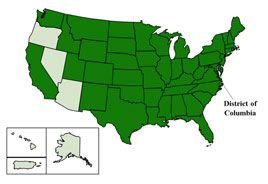- CDC
- Heart Failure
- Cardiovascular Clinical Consult
- Adult Immunization
- Hepatic Disease
- Rare Disorders
- Pediatric Immunization
- Implementing The Topcon Ocular Telehealth Platform
- Weight Management
- Monkeypox
- Guidelines
- Men's Health
- Psychiatry
- Allergy
- Nutrition
- Women's Health
- Cardiology
- Substance Use
- Pediatrics
- Kidney Disease
- Genetics
- Complimentary & Alternative Medicine
- Dermatology
- Endocrinology
- Oral Medicine
- Otorhinolaryngologic Diseases
- Pain
- Gastrointestinal Disorders
- Geriatrics
- Infection
- Musculoskeletal Disorders
- Obesity
- Rheumatology
- Technology
- Cancer
- Nephrology
- Anemia
- Neurology
- Pulmonology
Enterovirus D68: Six Things You Need to Know
The enterovirus story continues to evolve: here are 6 things clinicians need to know now.
EV-D68 infection has been confirmed 45 states as of October 8, 2014 according to the CDC.

The enterovirus story continues to evolve . . . from mid-August to October 8, 2014, the CDC or state public health laboratories have confirmed a total of 664 people from 45 states and the District of Columbia with respiratory illness caused by EV-D68.
1. The infection is not new . . . it was first described in 1962. This RNA virus was the first non-polio enterovirus not to be classified as a Coxsackie or an ECHO virus. There were 67 already (among polio, Coxsackie, and ECHO).
2. Until recently, there were only small outbreaks in the US and elsewhere. The current outbreak began in the midwestern US and has spread to almost all the contiguous continental states and Canada (Figure, click to enlarge).
3. Unlike the other enteroviruses, D68 has some phenotypic characteristics of rhinoviruses. It affects the respiratory tract instead of the GI tract, and causes significant acute bronchospastic illness, even in children without a previous history and significant cough, sometimes with pertussis-like post-tussive vomiting. Fever is uncommon and infections almost always have been observed in children.
4. There are no readily available tests for the specific strain, but confirmation of D68 can be obtained through individual state health departments.
5. Several deaths have occurred in children infected with D68, but the role of the virus in the deaths is as yet unclear pathophysiologically. Some cases of poliomyelitis-like asymmetrical flaccid paralysis have occurred as well.
6. There are no specific treatments available for this virus or any enterovirus. The best prevention is good handwashing.
